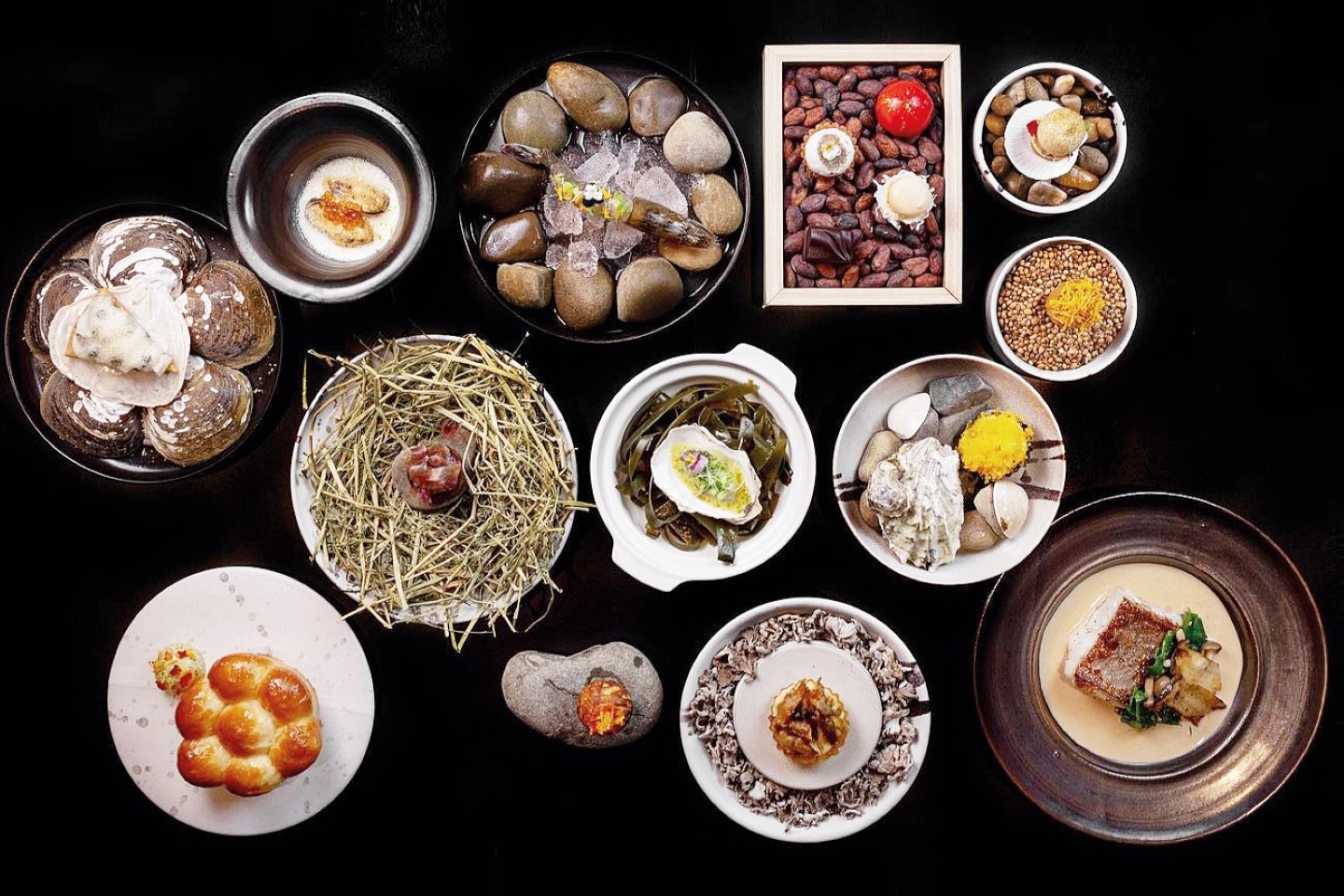
From Sabah’s fields and rivers to exquisitely plated full experience meals (All photos: Oitom)
I am in Kota Kinabalu for the first time. I have been told by many that Sabah is a different Malaysia and it is; definitely more laid back, thrumming to the drum of a slower, older time.
I am also here to visit Oitom, a fine dining restaurant that sustains a thriving food culture through locally sourced ingredients. Haute cuisine and Kota Kinabalu are not exactly synonymous, and this coastal city has none of the gastronomical innovation of cosmopolitan Kuala Lumpur or Singapore.
But Raphael Jay Peter Lee, the chef-owner of Oitom, has been determined to put his city on the global culinary map since the restaurant’s opening in 2019.
I read about Lee while seated at the boisterous and colourful Filipino night market, a local pasar malam on steroids. Here, fresh seafood aromas rise from the charcoal grills in every direction and piles of glistening fresh produce are precariously arranged into mounds.
I am served hinava, a Sabahan ceviche of raw fish originating from the state’s Kadazan Dusun tribes, and I mimic the group of men seated at the next table by slathering the raw fish slices in freshly squeezed lime, then grinding in the green chilli with the back of a spoon, with a final mix of ginger-shallots for a spoonful of briny deliciousness. With my grilled fish comes a side of latok, a seaweed relished by the seafaring Bajau tribe on Sabah’s eastern coast; they look like mini grapes on the vine but pop in the mouth with a tart aftertaste.
If this is the flavour of locally sourced ingredients, I am already in love with the cuisine of Sabah.
founder_and_owner_raphael_jay_peter_lee.jpg
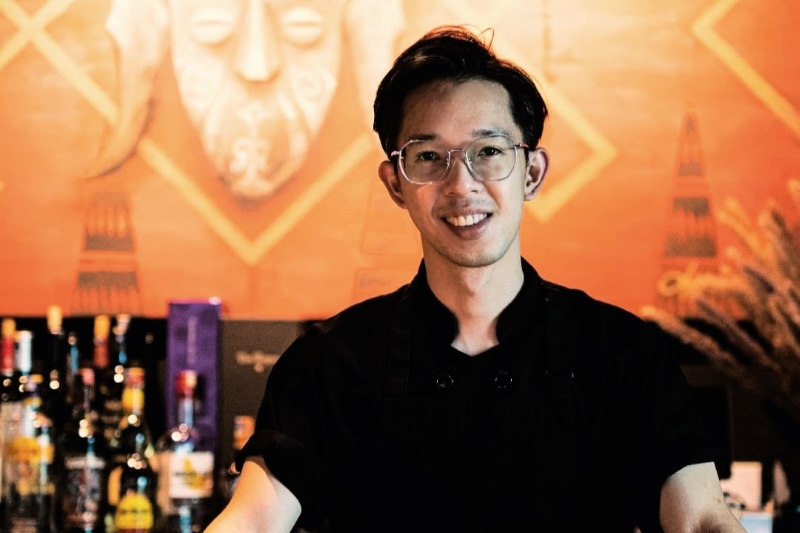
Oitom’s minimalist entryway, like many fine dining restaurants around the globe — why are they all so hidden? — is easy to miss in the concrete slabs of the surrounding area. The restaurant is named “black”, meaning hitam in the Kadazan language. I expect a profusion of black — a moody, broody darkness — but the interior is all light and wood. The light fixtures over the long table mimic the dry leaves from the sago or nipah trees … one almost expects them to rustle in the breeze.
The dining experience at Oitom takes a minimum of two hours and no one is in a hurry. The service is leisurely and the menu is artsy; the individual dishes are announced on fat bookmarks with line drawings that have a brevity that sings. There are a group of staff assembling food. We wait, sipping on pineapple tuak, a nicely fermented fruity taste to whet the appetite.
When the first appetiser — Kudat sweet corn with yuzu emulsion — appears, it is an explosion of sweet starch. And as I sit, swirling the tastes in my mouth, Lee appears and introduces himself.
He is boyish looking at 32, and immensely passionate about the food being served all around us. He talks of learning his art in Australia, then Singapore, and finally KL, but Sabah will always be home.
The transition into fine dining has not been easy. Lee grew up in a household with limited resources as his veterinarian father worked through the ranks in a government job, finally attaining the position of deputy director. Although he is now retired, it was his financial assistance and support that helped Lee become a master chef.
kudat_sweet_corn_with_yuzu_emulsion.jpg
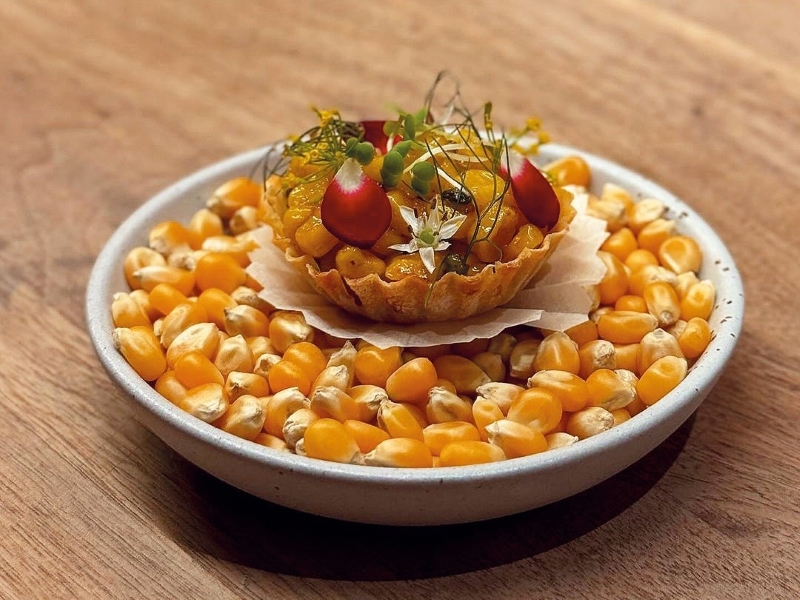
“My mum doesn’t eat here,” he says with a rueful laugh, “she prefers a casual and more friendly setting”.
He reminisces that his father, like most typical Asian parents, had hoped his son would become a doctor. As a boy, Lee would wait for his parents to go to sleep, then stay up at night to watch Gordon and Jamie cook continents away. The arguments continued until, one day, his father just capitulated. His mother, a housewife, has always been supportive and he waxes nostalgic about her kitchen.
“I grew up poor. My grandpa passed away before my birth and the ingredients in our kitchen were just enough to get by — nothing fancy. My father’s job was transferable and we moved from town to town, always living in a government house.”
Lee wants to eventually offer more casual dining, the kind his family still favours. The next day, Oitom will be in a pop-up event at the North Borneo Festival, with burgers on the menu.
I am eating my way through an exquisite combination of scallops, bunga kantan salsa and hinava. The chicken comes with fresh truffles from France and the black garlic butter with the brioche is gorgeous.
Burgers? I ask, incredulous.
Lee indicates the rows of freshly baked rolls lined up on the far wall, a yeasty smell permeating the room. “Very different. I’m excited … if that works, we will need to understand the market and maybe offer more in that direction.”
He is also contemplating a dessert bar, something casual but with locally sourced ingredients. Finances are still tight but he has big dreams.
oitom.png
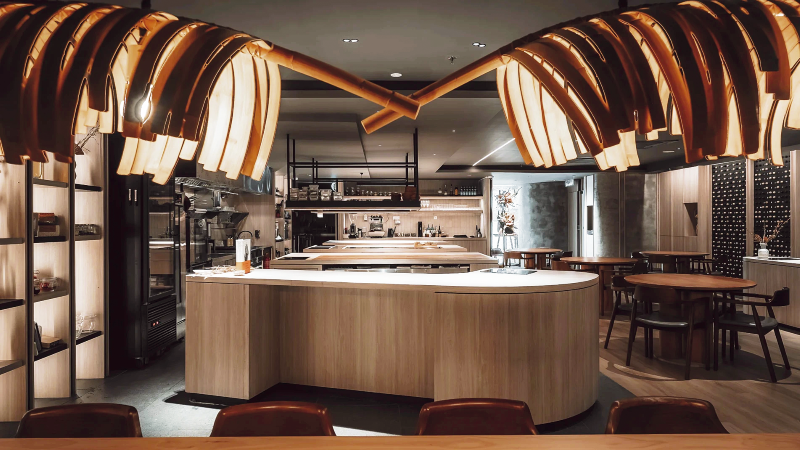
The Covid-19 years hit hard. “I stopped and sat and looked at the team. To be honest, I had no idea, but knew we had to keep moving forward. It is hard to take a break and I still think about that journey.” Although rents became affordable during the pandemic, takeaways for fine dining were not practical, and the cost of labour also increased after 2019.
He began to focus on branding and marketing once the market opened up again, and in February last year, Oitom moved to its current location in a slightly different avatar. Lee still wanted the restaurant to be a blank slate, where anything is possible.
The duck is served with hints of curry leaves and basil, and the sea urchin in fennel is a symphony on the palate. The lobster, indigenised with a tuhau sambal (using the stem of the torch ginger), is an aromatic and citrusy mélange of flavours.
Despite growing up in towns like Keningau and Sandakan, Lee became enamoured with Italian fare as television laid the foundation for his career. It was only much later in life that he questioned the absence of Sabahan cuisine in fine dining.
“There was a demand from tourists but there was no element of Sabah in the food being served, even here. I began to feel guilty. When I first started my career, I had no idea of fine dining, but I had the idea of empowerment. How can I help KK?”
img_6074.png
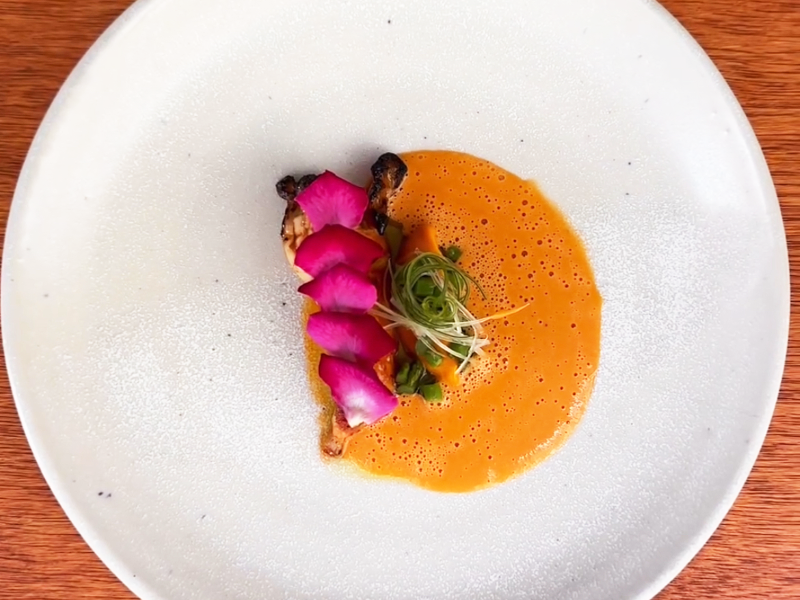
The doughnut arrives with bambangan and cinnamon. Bambangan is a seasonal wild mango available during the durian season. I tasted the fermented concoction syphoned into the baked doughnut. The astonishing smoothness is tempoyak-like, which taste both sour and sweet.
Sustaining a fine dining restaurant using locally sourced ingredients has not been easy. “Fine dining is a philosophy; it requires strict quality control. Sabah was very laid back; the oysters were clean but they could be better. The suppliers found criticism hard to take, as they were content with how things had been done for so long.” Oitom was the first to take quality control so seriously but now the market has matured.
He nods at my plate with the chocolate and sauce; keluak is a poisonous nut and must be rinsed and submerged under water for twelve hours, then cooked for four, for this resultant silky black colour when the toxins are removed. The indigenous people still wash and soak these in the rivers.
We are at the end of the meal and it has been a delectable experience. Borneo includes five major ethnic communities — Kadazan Dusun, Murut, Lundayeh, Rungu and Bajau — and their diet is rich with the treasures of the forest, the hills and the waters. There is so much still to taste and discover and Oitom, with a changing menu, is serving Sabah bite-sized in beautifully plated deliciousness.
This article first appeared on June 3, 2024 in The Edge Malaysia.


